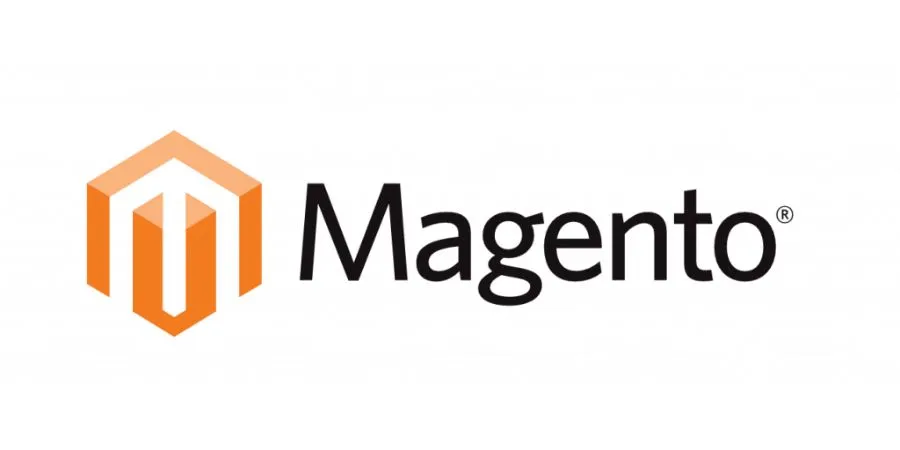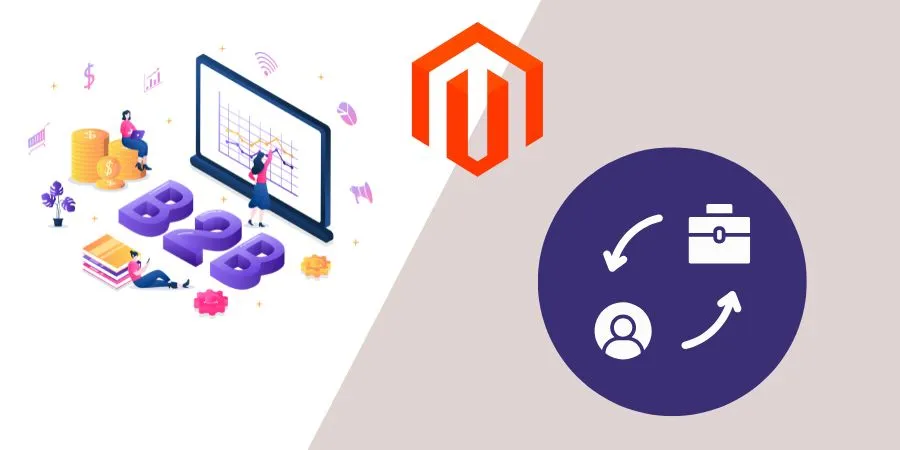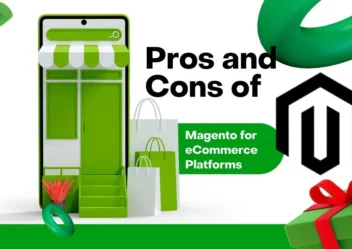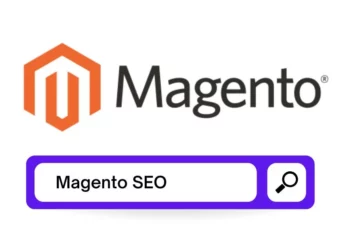Magento 2 B2B vs B2C Ecommerce: Which Fits Your Business?
With its diversity, Magento 2 provides strong solutions for both B2B (Business-to-Business) and B2C (Business-to-Consumer) models. How do you know which version suits your business needs? If you want to deliver a smooth and personalized customer experience, understanding the key differences between Magento 2 B2B and B2C is necessary.
Find out with Arrowtheme what Magento 2 B2B vs B2C are, explore the core feature differences, weigh the pros and cons of each, and help you decide which Magento 2 e-commerce path is right for your business. Let’s dive in and find the best fit for your growth goals.
Claue – Clean and Minimal Magento Theme
We provide an amazing Magento theme with fast and responsive designs. Let’s find out!
What is Magento 2?

Magento 2 is the second generation of the Magento open‑source eCommerce platform, released on November 17, 2015. It is maintained by Adobe and available in both a free open-source edition and a commercial Adobe Commerce edition. Built on PHP 7+ with modern web technologies like HTML5, CSS3, and MySQL/MariaDB, Magento 2 delivers significant improvements in performance, scalability, and flexibility compared to Magento 1.
Magento 2 facilitates businesses to create highly customizable, mobile‑responsive, and feature‑rich storefronts backed by an extensive extension marketplace.
What is Magento 2 B2B?
Magento 2 B2B is an extension to Magento 2 that equips merchants with enterprise-grade business‑to‑business capabilities on top of the core eCommerce platform. Companies can manage complex purchasing processes through features like Company Accounts, Shared Catalogs, Requisition Lists, Quick Orders, Negotiable Quotes, and Purchase Order Approvals. Since version 2.2, Magento 2 B2B transforms a standard storefront into a scalable B2B solution built on Magento 2’s modular, API‑driven architecture.
What is Magento 2 B2C?
Magento 2 B2C is the Business‑to‑Consumer edition of the Magento 2 e-commerce platform. It is specifically for merchants selling directly to individual customers rather than other businesses. It is offered in two main varieties: the freely available edition and the paid edition, which adds proprietary B2C‑focused features, cloud services, and premium support.
Magento 2 B2C’s capabilities include real‑time personalization, responsive storefronts, streamlined checkout, built‑in marketing and promotion tools, advanced catalog and order management, extensibility via Marketplace extensions, enterprise‑grade security, and performance optimizations.
What is the Difference Between Magento 2 B2B Features & B2C Features?

Magento 2’s B2B and B2C editions share a common core about inventory management, REST/GraphQL APIs, and a scalable architecture. However, they diverge significantly in how they address buyer profiles, pricing, ordering workflows, and marketing capabilities.
Company & User Management
B2B Company Accounts allow multiple buyers to operate under a single corporate profile with role‑based permissions and approval hierarchies.
B2C treats each site visitor as an individual Customer Account, typically without multi‑user permissions or approval workflows.
The Order Scale
B2B orders are often large‑volume bulk purchases, whereas B2C orders are smaller, varied shopping carts.
Catalog & Pricing
B2B uses Shared Catalogs to assign custom product assortments and tiered pricing per company or customer group.
B2C relies on a Public Catalog with standard pricing rules and dynamic cart price rules (e.g., coupons, discounts).
Ordering & Checkout
B2B supports Quick Order (SKU lists or CSV uploads) and Requisition Lists for repeat bulk orders, plus Negotiable Quotes and Purchase Order terms on account.
B2C offers a Fast One‑Page Checkout optimized for guests and registered shoppers, with saved payment methods and express options (e.g., PayPal, Apple Pay).
Marketing & Personalization
B2B marketing optimizes account‑based promotions, custom catalogs, and negotiated pricing rather than mass‑market campaigns.
B2C leverages Real‑Time Personalization, Targeted Promotions, and AI‑Driven Product Recommendations to increase conversion and AOV.
Content & Experience Management
B2B storefronts are usually utilitarian, prioritizing efficiency. Content updates often require a developer or admin intervention.
B2C uses Page Builder for drag‑and‑drop creation of rich landing pages, banners, and dynamic blocks without coding required.
B2C also supports PWA Studio and headless implementations for seamless mobile‑first experiences.
Integrations & APIs
Both editions share REST and GraphQL APIs for headless commerce and third‑party integrations.
B2B often sets deeper ERP/CRM integrations for real‑time order, inventory, and account management. B2C integrates with marketing automation, analytics, and live search services to optimize consumer engagement.
For your ease of reference, we have created a comparison table:
| Feature Category | Magento 2 B2B Features | Magento 2 B2C Features |
| Company & User Management | Company Accounts with nested hierarchies, role‑based permissions, multi‑user approval workflows | Individual Customer Accounts or guest checkout without multi‑user roles |
| Catalog & Pricing | Shared Catalogs to assign custom assortments and tiered pricing per company/customer group | Public catalog with rule‑based pricing, dynamic cart price rules, coupons, and discounts |
| Ordering & Checkout | Quick Order (SKU list/CSV upload), Requisition Lists for repeat bulk orders, Negotiable Quotes, Purchase Orders on account | Optimized One‑Page Checkout, guest checkout, saved payment methods, express options (PayPal, Apple Pay) |
| Marketing & Personalization | Account‑based promotions, custom catalogs per company, negotiated pricing workflows | Real‑time personalization (Adobe Sensei), AI‑driven product recommendations, targeted promotional campaigns |
| Content & Experience Mgmt | Standard CMS pages and blocks requiring developer intervention for complex layouts | Drag‑and‑drop Page Builder, Content Staging, and PWA Studio for headless, mobile‑first storefronts |
| Integrations & APIs | Deep ERP/CRM integrations, Catalog Service API acceleration for high‑volume B2B, full REST/GraphQL support for headless commerce | Marketing automation, analytics, Live Search, POS and marketplace integrations via REST/GraphQL APIs |
| Scalability & Performance | Modular architecture with Redis and Varnish caching, optimized for high‑volume orders and multi‑company storefronts | Native PWA, CDN/Edge Delivery Services, and Lighthouse‑optimized storefronts for fast consumer experiences |
Pros and Cons of Using Magento 2 B2B vs B2C
Magento 2 B2B and B2C bring their strengths as well as challenges.
Pros and Cons for Magento 2 B2B E-commerce

The strengths and limitations of Magento 2 B2B E-commerce are something you need to consider when evaluating its fit for your digital commerce operations.
Pros of Using Magento 2 B2B
Comprehensive B2B Feature Set
Magento 2’s B2B module’s diversity empowers wholesalers and manufacturers to meet the needs of complex procurement workflows online.
Scalability & Integration
Magento 2 B2B integrates with ERP and CRM systems, supporting global deployments, high transaction volumes, and multi‑entity organizational structures.
Customization & Extensibility
Businesses can tailor every aspect of the buying experience to contractual agreements.
Advanced Account Management
Multi‑user company profiles with nested hierarchies and credit‑based payments streamline corporate buying. Magento 2 B2B reduces manual procurement steps and upgrades order visibility.
Cons of Using Magento 2 B2B
High Total Cost of Ownership
While the core Magento 2 is free, unlocking B2B features requires Adobe Commerce licensing or a standalone B2B extension. In addition, there are substantial costs involved in budgets for development, support, and ongoing maintenance. Developers report retainers starting around £1,500/month and frequent upgrade costs.
Complex Implementation & Skilled Resources
To configure and customize B2B workflows, projects demand experienced Magento developers. Otherwise, businesses often face lengthy project timelines and risk overruns if in‑house expertise is limited.
Performance & Maintenance Overhead
The rich B2B feature creates effective projects but also increases codebase complexity. It leads to potential performance bottlenecks on under‑provisioned infrastructure. Therefore, regular security patches and version upgrades are necessary.
Pros and Cons for Magento 2 B2C E-commerce

Pros of Using Magento 2 B2C
Advanced Marketing & Personalization
Magento 2 B2C adds AI‑driven product recommendations, real‑time personalization, targeted promotions, and loyalty programs.
Content & Experience Management
The drag‑and‑drop Page Builder and Content Staging tools let non‑technical marketers create rich landing pages, banners, and dynamic blocks without developer intervention.
Mobile‑First & PWA Support
Native responsive themes and PWA Studio create app‑like shopping experiences with offline support and push notifications. It improves conversion on mobile devices.
Omnichannel & Multi‑Store Capabilities
Manage multiple storefronts, languages, and currencies from a single admin panel. Magento 2 B2C integrates seamlessly with POS, marketplaces, and social commerce channels via REST/GraphQL APIs.
Cons of Using Magento 2 B2C
Significant Development & Maintenance Costs
Customization, performance tuning, and advanced marketing features are premium extensions. So, Magento 2 is more expensive than hosted SaaS alternatives.
Hosting & Infrastructure Requirements
To achieve lightning‑fast page loads and high uptime for peak traffic, you need strong hosting (Varnish, Redis, CDN). Of course, they will increase the operational budget.
Dependency on Third‑Party Extensions
Many niche features (such as headless front‑ends, specialized payment methods, or advanced analytics) rely on extensions that must be vetted, licensed, and maintained separately.
Magento 2 B2B vs. B2C Ecommerce Is Right for Your Business?
Magento 2 B2B is the perfect fit for wholesalers, manufacturers, and distributors managing complex procurement workflows, bulk orders, and credit‑based payments. Company Accounts have role‑based permissions, Shared Catalogs to control product assortments and tiered pricing, Requisition Lists to simplify repeat ordering. Especially Negotiable Quotes facilitate buyers and sellers to discuss terms before converting quotes into orders.
Magento 2 B2C suits retailers, direct‑to‑consumer brands, and omnichannel merchants. Its target is individual buyers with streamlined, engaging shopping experiences. Core Open Source features such as catalog management, promotions, and checkout are enhanced by Adobe Commerce’s Page Builder for content creation, AI‑driven product recommendations, and PWA Studio for app‑like storefronts. Live Search and dynamic navigation powered by Adobe Sensei further improve product discovery efficiency.
To answer the question of which type of Magento is right for you, you need to ask whether your customers require account hierarchies, custom pricing, and bulk ordering (signs you need B2B) or whether you prioritize fast guest checkout, marketing‑driven promotions, and personalization (signs you need B2C).
Evaluate your average order value and volume: high AOV and fewer, larger orders suggest B2B, while lower AOV with higher transaction counts suggest B2C. Consider your organization’s resources for licensing and development, as B2B features require Adobe Commerce or a standalone extension.
If your target audience is both individuals and businesses, you can integrate the two in one. Magento 2 supports running both B2B and B2C models via multi‑storefront and customer group configurations. So, businesses can cater to both corporate and individual clients within one platform. This hybrid approach reduces infrastructure overhead and unifies backend operations.
Selecting Magento 2 B2B or B2C depends on your target audience, order complexity, and desired shopping experience. Businesses with complex procurement and high‑value clients will thrive on B2B features, while consumer‑focused retailers will benefit most from B2C enhancements.
Conclusion
The choice between Magento 2 B2B vs B2C depends on your audience, business goals, order complexity, and customer expectations. No matter which path you choose, Magento 2 offers the tools and customization options needed to support a competitive, future-ready online business.
Contact US – ArrowTheme:
– Email: [email protected]
– Facebook: Facebook.com/ArrowThemeTeam
– Website: ArrowTheme.com
Read more: Magento Websites: Top 10 Brands Using Magento for eCommerce



